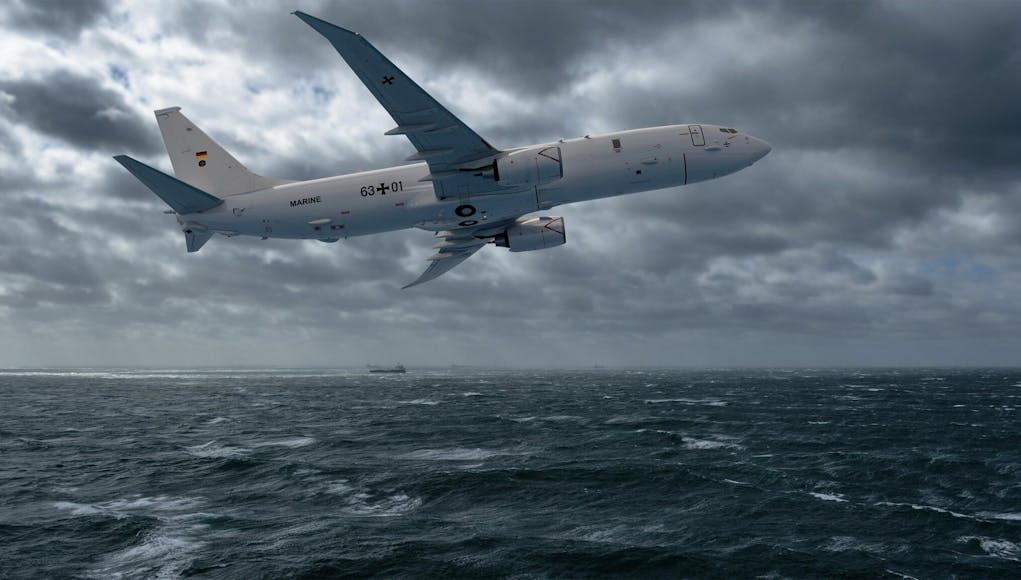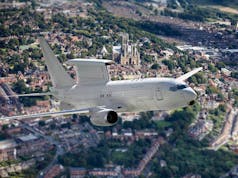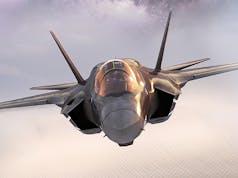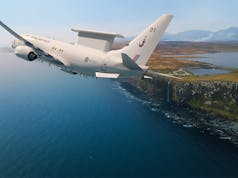The US State Department has authorised a Foreign Military Sale to Germany involving MK 54 Lightweight Torpedoes and associated equipment, at an estimated cost of $300 million.
As disclosed in the official statement, “The State Department has made a determination approving a possible Foreign Military Sale to the Government of Germany of MK 54 Lightweight Torpedoes and related equipment for an estimated cost of $300 million.”
The U.S. Defense Security Cooperation Agency conveyed this potential sale to Congress.
Germany’s request, as detailed in the notice, is to acquire “up to eighty (80) MK 54 All Up Round Lightweight Torpedoes (LWT).”
The sale also encompasses a broad range of supplementary equipment and services, including “MK 54 Mod 0 LWT spare parts; Recoverable Exercise Torpedoes (REXTORPs) with containers; handling shapes and containers; torpedo spare parts; tools for mounting and dismounting of Air Launch Accessories (ALAs); equipment for analysis of REXTORP exercise shots; REXTORP maintenance equipment; training; publications; support and test equipment; U.S. Government and contractor engineering, technical, and logistics support services; and other related elements of logistics and program support.”
This proposed sale is articulated as crucial for US foreign policy and national security, aiming to enhance the security of a key NATO Ally. The statement notes, “This proposed sale will support the foreign policy and national security of the United States by improving the security of a NATO Ally that is an important force for political and economic stability in Europe.”
The sale is designed to upgrade Germany’s Anti-Submarine Warfare capabilities on its upcoming P-8A aircraft.
Raytheon Integrated Defense Systems in Portsmouth, Rhode Island, is identified as the principal contractor. The announcement confirms that there are no known offset agreements in connection with this potential sale. Additionally, the implementation of this sale will not necessitate additional U.S. personnel in Germany; however, temporary U.S. Government Engineering and Technical Services may be required for training and technical assistance.














Given the Orcs ability to launch 1 SSN every two years and their failed SSK program I can’t see them posing much of a threat in the North Atlantic given just how many P8 are going to be there.
The UK should try and sell its Stingray Mod 1 torpedo to Germany for the P-8 if it hasn’t already. And to other P-8 users.
Spot on. The enhanced capabilities of the Mod 1 in shallower waters should be of interest to them
Excellent point. Wonder whether there have been any credible, unbiased trials of Mk 54 vs. Stingray MoD 1? Germany may have the wherewithal to sponsor such a trial. Could an open, fair competition motivate both manufacturers into further design upgrades?
As far as I know, the UK is already tinkering with the Future Light-Weight Torpedo. The US has a range of updates planned for the Mk-54, to the point where it basically won’t be a Mk-54 at all (though that latter point is similar to the AMRAAM going through 8 steppings of the “C” model, congress don’t like “new” versions costing money :/
It could still be an interesting exercise to establish the relative performance of existing baseline models. Is the Future Light-Weight Torpedo in concept phase, or proceeding through design and manufacture? 🤔
I agree 🙂 but we have many players waiting to ante . . MU90, MK.54, SRay. To answer your Q, its all £ based. Ultimately any such test, as you suggest would be sooooooo classified, it would lead to only speculation.
🤔🤯👍
…mod… autocorrect strikes again. 🙄
Are Stingray even build today?
Maybe not the Mod 0 Stingray but there was an article on the mod 1 I think on Janes. Norway is helping with the integration costs. There have been more detailed comments on posts here.
When I go to a pub with three mates (yes I have that many) and trot up to the bar to get a round in, I don’t say to the bar person ” I would like to order “up to 4 pints” please”, I order 4 pints.
Why in defence circles do they not order a definite amount…or is this political thing.or just hiding your assets? AA
A bit of political spin and a bit of budget constraints/negotiations. Would guess the supplier gives then a range of costs based on extras etc and they guess how many they can get for the money, then the haggling starts and the supplier throws in a whole load of extra costs, knowing that once they get that far the buyer is decided plus probably inflation / other costs reduce volume for money set.
If you went to that pub 20 years ago and said how much is 4 pints today, I will buy them in 20 years time, your money will end up not affording 4.
Cheers Steve. Fair comment. Unfortunately the phrase ” up to” in MOD speak usually means “nowhere near”…AA
It’s the challenge of anything public sector. You have to announce expenditure long time before agreeing contracts etc, which you would never do in the private sector as you know it would go badly if you did.
three more friends than me Mate!😉
It will be very interesting to see which direction France takes when it eventually has to retire its ageing fleet of Atlantique 2 ASW aircraft (2035ish).
They have a policy of building all their military stuff in house as it were, but with past Atlantique users – Germany/Netherlands going elsewhere or letting the capability drop (Dutch/Spanish) export potentials for a new design/build will become very limited I shouldn’t wonder, thereby keeping production costs high.
I agree it will interesting to see which way the French go on this one .Give them there due on Military matters tend to go for own platforms. 🇫🇷
Airbus have designed the A319 Maritime Patrol Aircraft (MPA) based on their passenger carrying A319. It is purely a CAD/paper design. Its specifications are very similar to the P8, except its bomb bay is bigger, as it can accommodate 8 lightweight aerial delivery torpedoes, compared to the Poseidon’s 5.
Initially France and Germany were teaming up to build the aircraft. But something clearly went wrong? As the German Government announced it was going to buy the P8. Which leaves France where? They have in the past continued to deliver an aircraft program on their own. But can they still do this with SCAF (FCAS) running? Boeing are cornering the market at the moment. Apart from a few transport aircraft and some drones configured to maritime surface patrol. There is only the Japanese P1 that is competing with the P8 for ASW aircraft. But that isn’t being marketed competitively for export. The Chinese KQ200 has not been exported and Russia’s IL38 although being upgraded, is no longer in production. The ATR72 MPA has been marketed with a ASW variant as has the C295 MPA. But neither have had big orders except for maritime surveillance versions.
If Airbus can massively undercut Boeing’s price for a P8, without loosing too much capability. Then there would be a market for the A319. However, a lot of countries that either flew Atlantics or Orions, won’t be in a position to afford either of these tier 1 capable aircraft. So I do believe there is a case for a cheaper alternative. probably based on a light to medium transport aircraft, such as Alenia’s C27, ATR-72 or C295. It will need to marketed as a viable alternative, otherwise countries who can’t afford the P8, will just do without.
Hi mate, think you might very well be correct in your assessment of capabilities.
Twin engine turbo props will attract many countries with a limited budget, but the French requirement would be a decade away yet, so many whom might be considering renewing this capability will either let the capability wither on the vine, or else seek a alternate solution (Twin props).
I didnt realise that the Dutch have been without such a capability since 2005ish, where as the Spanish retired their MPA’s last year without a replacement it seems!
The Spanish are using the CN295 for its MPA. They have recently order 16. However, only 6 of these will be ASW variants, the remaining 10 being surface surveillance.
Denmark are apparently the next Country looking at purchasing the P8.
Canada had a pretty bad experience with C-295 for MPA.
That’s pretty disappointing to hear. Do you why?
They are only coming into service with the Canadians and are for SAR, not MPA.
Search for this article
Sovereignty in the Arctic and the struggles of the CC-295 Kingfisher: Richard Shimooka in the Hill Times
While some of the deficiencies of the CC-295 Kingfisher are fixable, the problems around weight, power and icing capabilities are very likely not.
They are only coming into service with the Canadians and are for SAR, not MPA.
Cheers mate, that one slipped in under my radar.
Although 6 for ASW doesnt seem kike a lot, given that the Spanish have a v large area to cover if you include both the med and NA.
While it’s possible airbus could develop an A319 variant, most of the cost is in the sensor fusion and processing, not the airplane. The P-8 is more than an airliner with a bomb bay, but rather a flying super computer processing the ocean below it.
I thought the Dutch were now going to buy P-8?
They disbanded their two P3 MPA squadrons around 2004/5 when they retired the last of their P3s.
Since then the only airborne Asw assets they have are helicopters – currently NH90’s. If you look at the Dutch navy’s future upgrade programmes, it doesn’t include fixed wing MPA assets. That’s not to say that you are wrong of course, if so, then that news has slipped under the radar.
That’s correct, there are currently no plans to resurrect MPA capability in The Netherlands, sadly. If there were, a major problem would be where to base them, as many airbases have been closed over the years. For most of them reactivation is not a possiblility and Valkenburg naval air station (where the Orions were based) is one of them. The runway of the sole remaining naval air station, De Kooy, is much too short for any MPA and cannot be lengthened, unless a railway tunnel is built at great cost.
That’s the end of the cold war peace dividend for you! I think many nations are now re-appraising their respective defence policies and wishing they had all paid a bit more attention during the intervening years.
Absolutely. That cashing in of the so called peace dividend never sat well with me anyway, but here we are. After Putin’s Munich speech of (off the top of my head) 2007 all defence cuts should have been off the table. Especially after the 2008 invasion of Georgia it should have been clear to anyone that Putin meant every word he said and that the strategic partnership with Russia was effectively over. After that all defence cuts were, at least in my opinion, irresponsible.
Hmmm…predict massive condemnation for this suggestion, but for the sake of argument, wonder whether select NATO countries, unable or unwilling to fund national fleets of P-8As, could join a pan-NATO consortium to purchase and operate a fleet of MPAs, in a manner analogous to the existing E-3 fleet? 🤔 Critics couldn’t contend that the concept is not feasible, because there is an existing counterexample. Believe this could be a beneficial arrangement for not only countries such as the Netherlands, which have technical constraints, but also the UK, which is continuing to experience a budgetary issue.
One moment please, to don body armor and seek cover…OK, now, fire for effect…
I think it already happens but is not spoken about. The RAF ditched SEAD when Alarm was abandoned. But Germany has a fairly good SEAD fleet. All about Nato being integrated IMO. More so than some people care to acknowledge.
You won’t catch any flak from me on this, it is certainly an idea worth exploring. Nevertheless I hope my country (NL) will find a way to stand up a squadron of P-8s, even though it will be something far from easy to achieve. Suitable bases are in short supply and recruitment is also a problem throughout our Armed Forces, just to mention a few things.
👍🤞
It could be a good idea. But there would be an issue of basing. Where there’d be a need at least 2 bases. One in Portugal for the mid Atlantic and another probably in Greece covering the Med. With the UK, Norway and hopefully Denmark. There should be enough to cover the North Atlantic. The Baltic probably could do with a few besides the German P8s. But I think we should wait to see what Sweden and Finland bring to the party.
Hmmm, Portugal and Greece? Intriguing, my initial thought included Spain or possibly Gib to cover parts of Med and Atlantic. Never interacted w/ the Portuguese, do they have the capability and infrastructure to support this mission? Isn’t there an already existing E-3 facility based in Greece? Could prove to be feasible and cost-effective to simply transition missions at the appropriate time. Heartily agree Finns and Swedes could assist in Baltic, and possibly the far North. BTW, thought there was an article which proposed a similar plan for NATO E-7 acquisition? With some forethought and planning, synergies and cost-savings may be available by co-basing fleets, as deemed appropriate. 🤔
sounds like i mixed them up with some one else, i just read something that said Denmark may be a future customer
Yes that’s correct. Denmark have approached the US, to bottom out a deal. I doubt it will be more than 6 to 8 though. Bearing in mind I’ve read NZ are looking at 4 with an option for another two.
Denmark has really impressive defense capabilities for a country its size. F-35 operator, long range air defense frigates, possibly P-8.
The reality is as countries drop the capability those, that have it (RAF/USAF/Germany?) will be stretched even further trying to provide it. A tale as old as time.